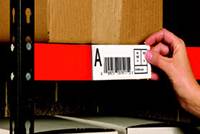Efficient warehouse management is essential for the smooth operation of any business. One often overlooked aspect of this process is the labeling system. Labels play a crucial role in identifying products, shelves, and storage areas. To enhance the effectiveness of your warehouse labeling, consider incorporating magnets. Magnets offer a versatile and durable solution that can greatly streamline your labeling processes. In this article, we’ll delve into the benefits of using magnets for warehouse labels and provide insights on selecting the perfect magnets for your needs.

The Advantages of Magnets in Warehouse Labeling
1. Versatility and Flexibility
Magnets are highly versatile and can adhere to various surfaces, including metal shelves, racks, and storage units. They can be easily repositioned or removed without leaving behind residue, making them ideal for spaces that require frequent reorganization.
2. Durability and Longevity
Traditional adhesive labels may deteriorate over time due to temperature changes, moisture, or frequent handling. Magnets, on the other hand, are durable and resistant to wear and tear. They maintain their integrity even in challenging environments, ensuring that your labels remain intact and legible.
3. Ease of Installation
Installing magnetic labels is a straightforward process. You don’t need any special tools or adhesives. Simply place the magnet on the desired surface, and it will adhere securely.
4. Customizability
Magnets for warehouse labeling come in various sizes, shapes, and colors. This allows you to customize labels according to your specific needs, enhancing the visual clarity of your storage areas.
5. Time Efficiency
Magnetic labels can be quickly moved or replaced when items are relocated or shelves are reorganized. This saves time compared to reapplying adhesive labels.
Selecting the Perfect Magnets for Warehouse Labels
1. Magnetic Strength
Consider the weight of the items you’re labeling. Heavier items or materials may require magnets with higher magnetic strength to ensure a secure hold.
2. Size and Shape
Choose magnet sizes and shapes that are appropriate for the size of your labels and the space available on your shelves or racks. Rectangular or square magnets are often used for standard labels, while custom shapes can add a unique touch.
3. Coating and Material
Opt for magnets with coatings that offer protection against moisture, rust, and abrasion. Neodymium magnets are popular due to their strong magnetic force, but ceramic magnets are also effective and more cost-efficient.
4. Labeling Method
Decide whether you’ll print directly on the magnetic surface or attach adhesive labels to the magnets. Direct printing provides a clean and seamless look, while adhesive labels offer flexibility for changing information.
5. Color Coding
If you use color coding to categorize items, choose magnets that come in a variety of colors to match your system.
6. Ease of Removal
While magnets offer easy repositioning, ensure they aren’t too strong that they become difficult to remove when needed.
7. Budget Considerations
Consider your budget when selecting magnets. Neodymium magnets tend to be more expensive, while ceramic magnets are budget-friendly without compromising functionality.
Conclusion
Warehouse labeling is a critical component of efficient inventory management. Magnets offer a durable, flexible, and user-friendly solution that can significantly enhance your labeling system. By selecting the right magnets for your warehouse, you can streamline your operations, improve organization, and ultimately boost productivity. As you explore different options, keep in mind factors such as magnetic strength, size, coating, and your specific labeling needs. With the right approach, you can harness the power of magnets to transform your warehouse labeling into a seamless and efficient process.




